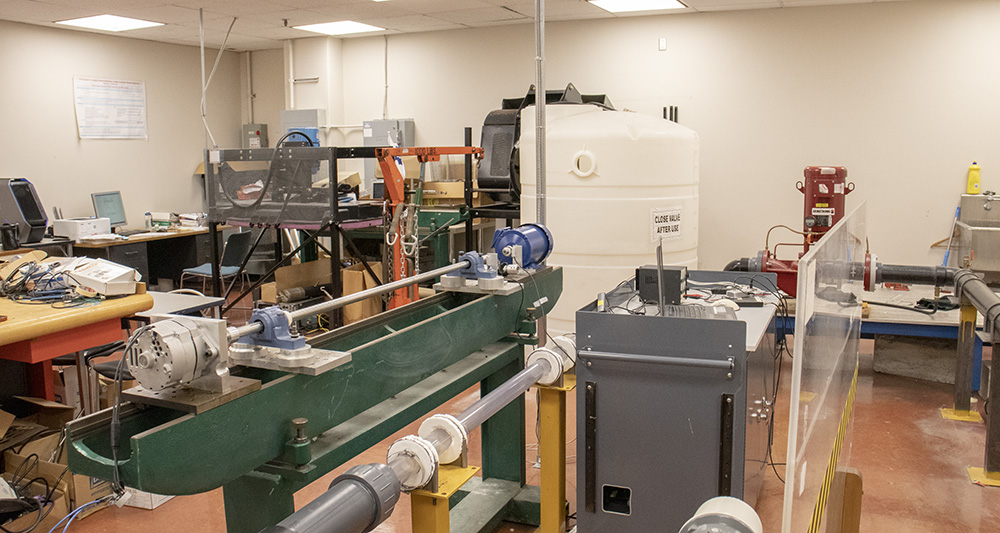Research
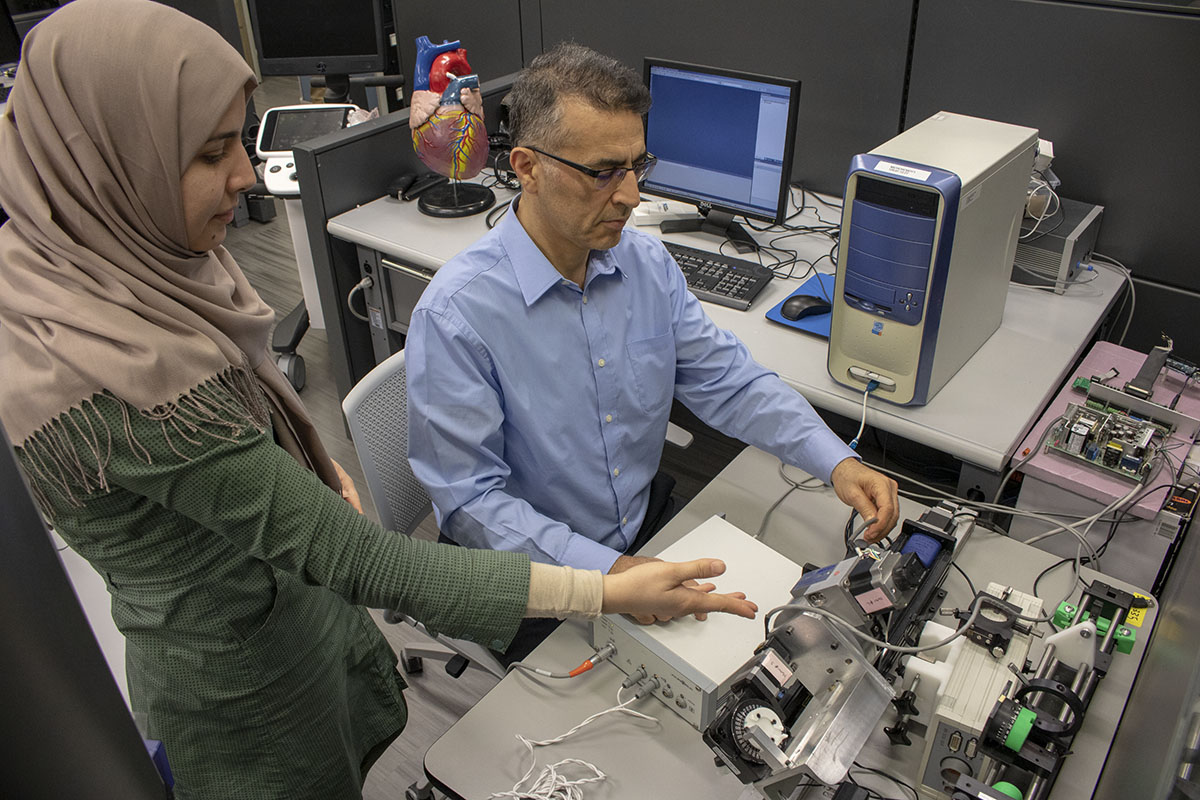
Our faculty and graduate students are addressing the rapidly changing needs of society. By working together – and in partnership with industry – advancements are being made in robotics, mechanics and systems operation, and their connection with people. From developing biotechnologies that benefit human health, to disruptive 3D modelling using artificial intelligence, cutting-edge research is happening in the Department of Mechanical, Industrial, and Mechatronics Engineering.
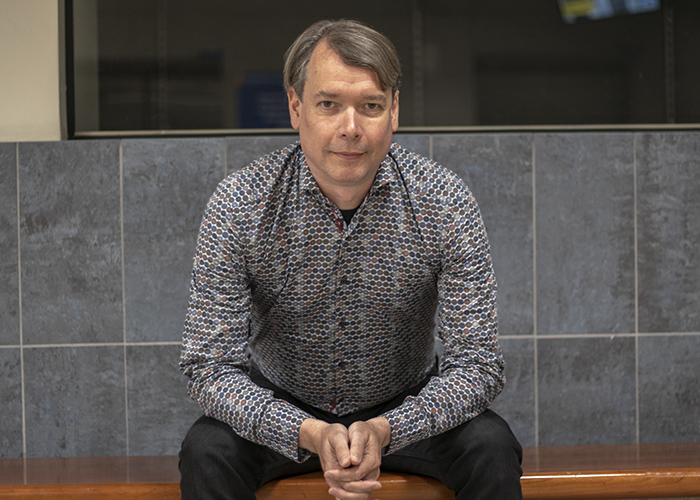
"Industry partnerships allow us to develop knowledge, tools and methods for creating healthy work environments. Collaborating with real workplaces gives students valuable experience and allows us to identify and solve problems before they happen."
Patrick Neumann
Professor, Industrial Engineering
Director, Human Factors Engineering Lab
Principal Investigator: Marcello Papini
KHE-24
This laboratory houses specialized equipment for the machining of a wide variety of materials using a highly pressurized water jet containing small solid particles. The apparatus is unique because it can be fitted with very small nozzles that allow the computer-controlled micromachining of features at the submillimeter scale.
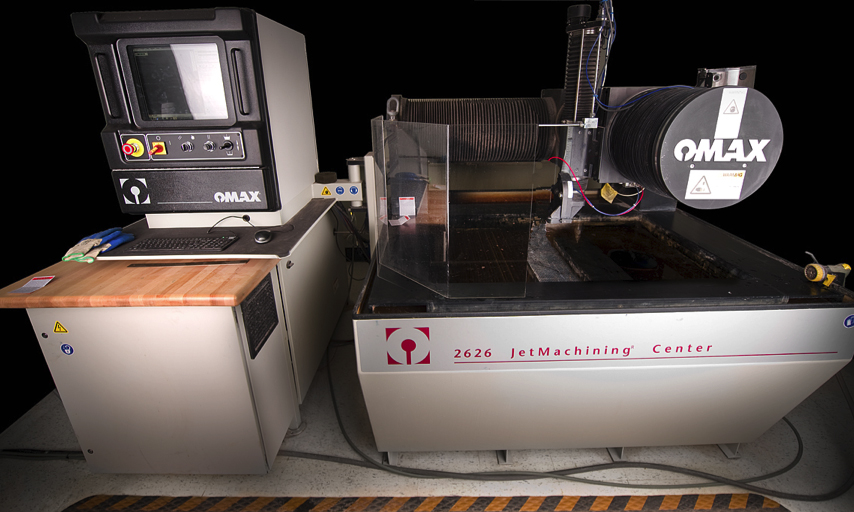
Principal Investigator: Vincent Chan
EPH-133
The Advanced Manufacturing Lab conducts research in the areas of advanced manufacturing, metrology and automation. Researchers also apply artificial intelligence to 3D printing.
Principal Investigator: Krishnan Venkatakrishnan
KHE-27
The BioNanointerface Facility is a Class-2 tissue culture laboratory. The facility is equipped to culture mammalian cells, cancer cells and stem cells. The equipment includes a state-of-the-art centrifuge, a Class-2 biosafety cabinet, a CO2 incubator for the maintenance of cells, a fluorescence microscope and an inverted microscope for monitoring cell growth and tracking cell viability.
Principal Investigator: Alan Fung
EPH-428
Research facilities include more than 20 computer workstations with specialized software located at EPH-428, and a set of two semi-detached fully instrumented (with National Instrument Compact Fieldpoint/Labview DAQ system with more than 400 sensors) research houses (called Archetype Sustainable House - ASH) located at the Toronto and Region Conservation Authority’s Kortright Centre. The ASH includes many advanced mechanical and renewable energy systems such as solar PV, PV/T, flat plate and evacuated tube solar thermals, micro wind turbines, heat pump water heater, variable capacity cold climate ASHP, GSHP with both vertical borehole and horizontal loop, GAHP, co/tri-generation, drain water heat recovery, HRV, ERV, infloor radiant heating, multi-zone AHU, and hybrid HVAC systems of ASHP and natural gas furnace/boiler with cloud based smart control.
Principal Investigator: Ayse Bener
CUI
Data Science Laboratory (DSL) is engaged in research and training programs. Research in DSL involves design of intelligent algorithms and development of decision-making models using machine learning and AI techniques to form risk management systems, personalized diagnosis and patient treatment systems, and process modelling systems. Training programs include degrees and short courses in business intelligence and smart analytics.
Principal Investigator: Kourosh Zareinia
EPH-313B
In HapTel, research is conducted on state-of-the-art technologies in haptics and teleoperation of robotic manipulators. The focus is on design and development of human-robot interfaces that provide the sense of touch for operators, with applications such as robot-assisted surgery. These robotic technologies will make medical interventions more efficient and less traumatic. The lab is equipped with advanced haptic devices including PHANToM OMNI and Desktop, robotic manipulators, microcontrollers, actuators and sensors, and a mechatronics workstation.
Principal Investigator: Patrick Neumann
EPH-313C
The focus of the Human Factors Engineering (HFE) Lab is understanding how sustainable working conditions at all levels lead to improved performance, increased profit and the greater well-being of the people who make it happen.
Visit the Human Factors Engineering Lab website.
Principal Investigator: Habiba Bougherara
EPH-109
The Laboratory of Biomaterials and Biomechanics (LBB) is a state-of-the-art facility for the fabrication and characterization of biocomposites for various engineering applications. The lab has 3D printers, a Carver press compression moulding machine, a lock-in infrared thermography (IR) system and a digital imaging correlation (DIC) system. The LLB team has worked on national and international collaborations, including LEM3, ENSAM Paris-Metz and Clément Ader in Toulouse, France.
Principal Investigator: Hua Lu
EPH-109
This lab is a centre for the research of advanced methodology, as well as the application of experimental mechanics.
Principal Investigator: Scott Tsai
Li Ka Shing Knowledge Institute, Room 767
The Laboratory of Fields, Flows, and Interfaces (LoFFI) specializes in using microfluidic platforms – systems of microchannels where viscosity and surface tension dominate the physics of fluid flow – to manipulate biological material, such as cells, and develop technologies that benefit the biotechnology sector. We value an interdisciplinary approach to problem solving, and we enjoy working with diverse groups, whether academic scientists and engineers or industrial and hospital partners. We welcome new collaborations.
Visit the LoFFI website.
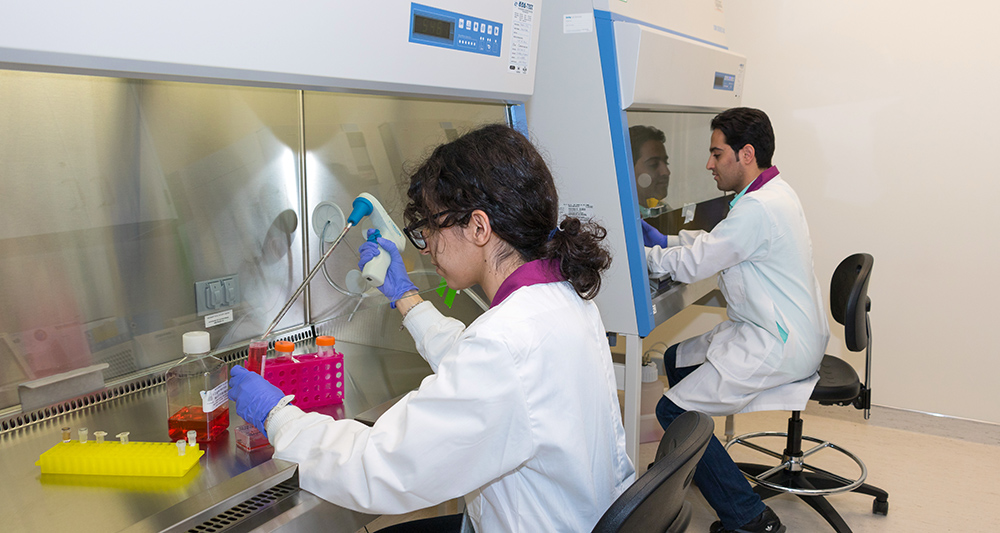
Principal Investigator: Daolun Chen
KHE-20A
The Mechanical Behaviour of Materials research lab contains state-of-the-art equipment including an Instron 8801 fatigue testing system, JEOL 6380LV scanning electron microscope (SEM) and PANalytical X-ray diffractometer (XRD). Dr. Chen’s research interests include advanced materials (bio and nanomaterials, composites) and their mechanical properties, fatigue, fracture, deformation, physical metallurgy, phase transformation, stress corrosion cracking, corrosion fatigue, failure analysis and life prediction.
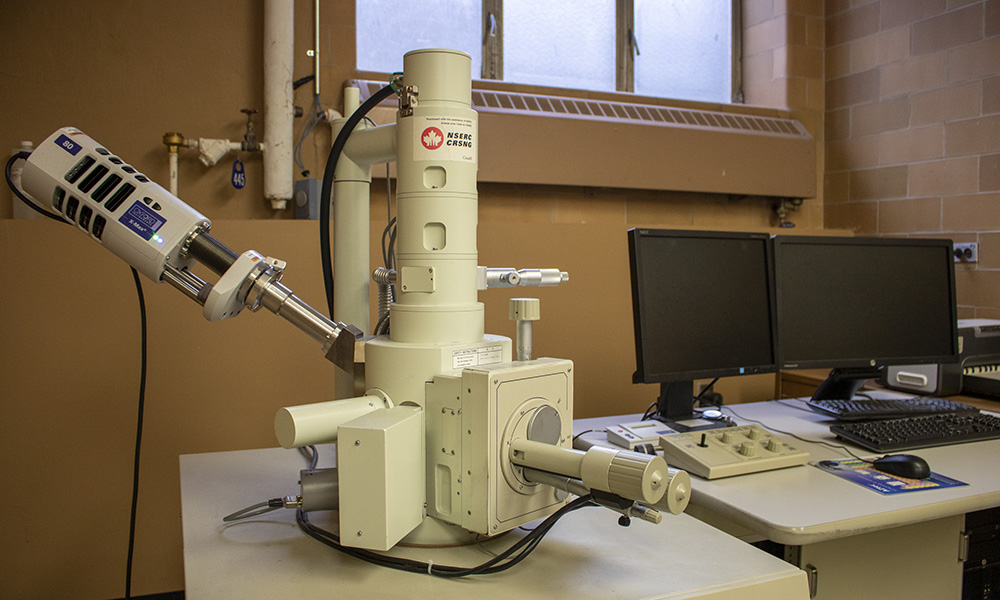
Principal Investigator: Siyuan He
EPH-133
Research in the Microelectromechanical Systems (MEMS) and Mechatronics Laboratory is focused on MEMS micromirrors and oscillation mirrors, with applications to scanning LIDAR for autonomous vehicles, autonomous guided vehicles, and robot navigation and obstacle avoidance; micro actuator and sensors; power harvesting; and piezoelectric actuators. The equipment in the lab includes a 3D optical profiler, microscopes, various lasers, a field-programmable gate array, and high precision electronic instruments.
Principal Investigator: Ziad Saghir
EPH-323
The Microgravity Science Lab is a thermofluid laboratory. Our equipment includes a Mach-Zehnder interferometer mounted on a vibration isolation table to allow users to measure the physical properties of any fluid, as well as an Anton Paar Abbemat MW multiwavelength refractometer to measure the index of refraction of any noncorrosive fluid. Our experiments have included measuring heat enhancement in porous media using nanofluid and hybrid fluid.
Principal Investigator: Ahmad Varvani-Farahani
KHE-25
Multiaxial Fatigue Research Facilities has been established to experimentally study fatigue and ratcheting response of materials under different loading spectra, to assess materials damage and measure crack growth. Multiaxial fatigue research equipment was funded by NSERC in 2000 and further developed by Dr. Varvani-Farahani to conduct loading on engineering components through the use of two independently controlled load-cells. The system is capable to further test material characterization as well as life cycles to failure and measure progressive plastic strain values over asymmetric loading cycles.
Principal Investigator: Ravi Ravindran
101 Gerrard Street East
The Centre for Near-net-shape Processing of Materials at Toronto Metropolitan University was the first university-based casting research facility in Canada with a focus on metal-casting processes such as lost-foam, permanent-mould, die and sand casting. It is a comprehensive, state-of-the-art and integrated facility with equipment for melting, casting and material characterization.
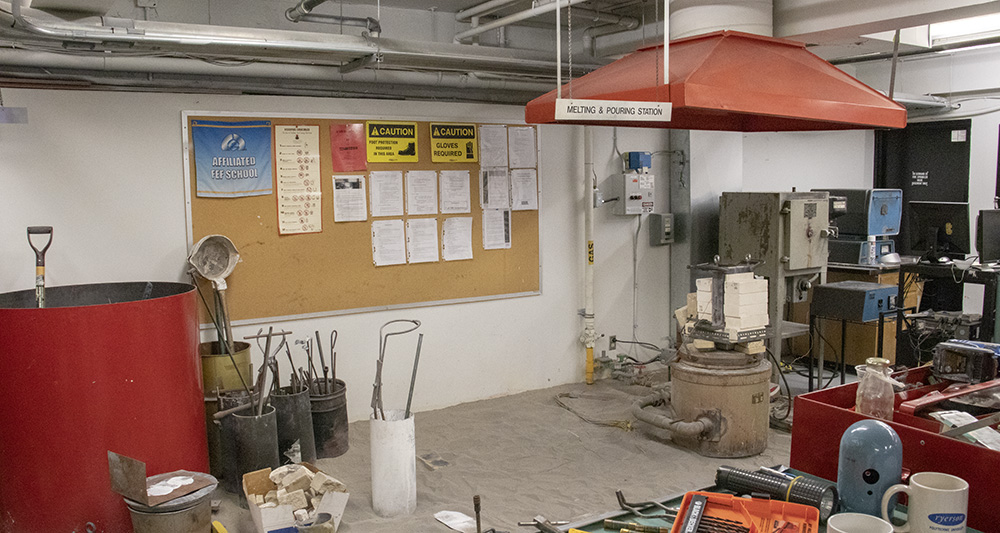
Principal Investigator: Sharareh Taghipour
EPH-232
At the Reliability, Risk and Maintenance Research Laboratory (RRMR Lab), we aim to develop advanced descriptive, predictive and prescriptive analytics-based solutions for physical asset management. Our goal is to close the gap between optimal and actual practices in maintenance and other novel applications such as sustainable assets management and medical screening. This goal will be achieved by using available data, formulating models which best describe the data and recommending evidence-based policies built on the outcomes of the models.
Visit the RRMR website.
Principal Investigator: Farrokh Janabi-Sharifi
EPH-335
Founded in 1997, the Robotics, Mechatronics and Automation Laboratory (RMAL) has become the home for both fundamental and applied research, and development projects in robotics and automation. The lab collaborates with industrial partners on fundamental and collaborative research, as well as development projects. RMAL is equipped with state-of-the-art equipment, including several desktop robots (from Denso and CRS), an industrial-grade manipulator (IBM 7575), medical robots (custom-built Althea and LBR Med from KUKA), micromanipulators with adaptive microscope, electromagnetic and optical tracking systems (Aurora and Optotrak Certus from NDI), mono and stereo vision systems, and high-end PCs with Nvidia GPUs for deep learning.
Visit the Robotics, Mechatronics and Automation Laboratory (RMAL) website.
Principal Investigator: Marcello Papini
EPH-136
In these laboratories, the fundamental material removal mechanisms associated with the high-speed impact of jets of small particles are studied. The applications include optimization of abrasive jet micromachining processes, development of new erosion-resistant coatings, and prevention of erosion-related wear in a wide variety of industries. The laboratories house equipment to create, image and analyze the jets, computers and software to model the material removal processes, as well as noncontact profilometers to characterize the damaged surfaces.
Principal Investigator: Wey Leong
EPH-440
This laboratory provides a controlled environment to study heat transfer phenomena in various thermal systems, such as fenestration systems and ground thermal energy storages. The lab features a Mach-Zehnder interferometer for measuring convective heat transfer and thermal conductivity of nanofluids, and a soil-cell apparatus equipped with thermo-time domain reflectometer for measuring heat and moisture transfer in soils and thermal properties of granular materials or soils. Research work carried out in this lab is supplemented by high-speed camera and advanced analytical techniques for post-processing interferograms, and computational fluid dynamics (CFD) for numerical simulations of thermofluids systems.
Principal Investigator: Krishnan Venkatakrishnan
EPH-339
This lab features an ultrafast laser of megahertz pulse frequency and an atomic force microscope. The laser is used to synthesize functionalized nano and quantum materials for biomedical applications, and the unique high-pulse frequency enables the generation of quantum-size nanomaterials. Current research in this lab is focused on exploring the potential of these nano and quantum materials for biomedical applications, including surface-enhanced Raman scattering for biochemistry detection and chemical trace detection, cancer diagnosis and therapy.
Principal Investigator: Shudong Yu
EPH-134
The Vibrations Research Facility studies flow induced vibrations and applications to nuclear fuel bundle fretting, multibody contact and dynamics, nonlinear system dynamics and vibrations of beams, plates and shells. The principal investigator, Dr. Shudong Yu, previously worked for Atomic Energy of Canada Ltd. (AECL) and undertook various projects in the area of nuclear fuel modelling and design.
